You must be logged in to rate content!
13 minute(s) of a 265 minute read
9-26-2015
I have been putting some miles on the car, no issues cruising around at idle to 100 MPH at part throttle. Got the steering tightened up, and an alignment, much improved. I borrowed the old tires that were on my other Skylark when I sold it, little tiny 12" wide BFG street tires made the car look ridiculous and spun big time on the dyno. Blew a head gasket again, third time on one side, and the other side has not given me any problems. I took the head to be milled flat and will put it back on ASAP then get a few more miles on it before winter hits. I am lowering the boost to 8 PSI for a while as my converter is getting blown through when the car is on high boost levels. The dyno guy said it went RIGHT up to 6000 RPM as soon and he floored it and he knows what it is like when a converter is overpowered. On the street the converter feels great, but the resistance against the dyno and likely drag racing causes the engine to fly up out of its usable powerband. If I reduce the boost then this should reduce the overpowering of the converter and help things out till I can replace the converter.
Which brought me to the custom Hughes converter I had built a long time ago for my other car... I bought a 4L80E yesterday and have a paddle shifter steering wheel setup to electronically manual shift the trans, will have toggle switch on the dash. No rush to tackle this trans swap I want to keep the car on the road and make good use of it with the minimum of changes as it is really well engineered by Mark. Lowering the boost, and hopefully solving the head gasket issue on the one side should result in some good reliability gains.
The stock 350 bottom end is really impressing even me!
Thanks Walt, used ARP studs after the first time they went. They should be fine for a few uses.
Mark, the fel pro gaskets are blowing out at their thinest locations and the MLS gasket it is tough to determine where it started leaking as they stay completely intact but once the seal is broken coolant got into all the holes.
The best I can determine so far is that the felpro gaskets are not going to hold up well to high boost, and that the MLS gaskets should have a fresh smooth surface to seal best.
Next up is the factory steel shim gaskets, then pulling this engine if that head gasket goes again...
Im super proud of the passenger side head though, its hanging in there without an issue.
9/29/15
Here is my old car! It is now running, but not tuned:
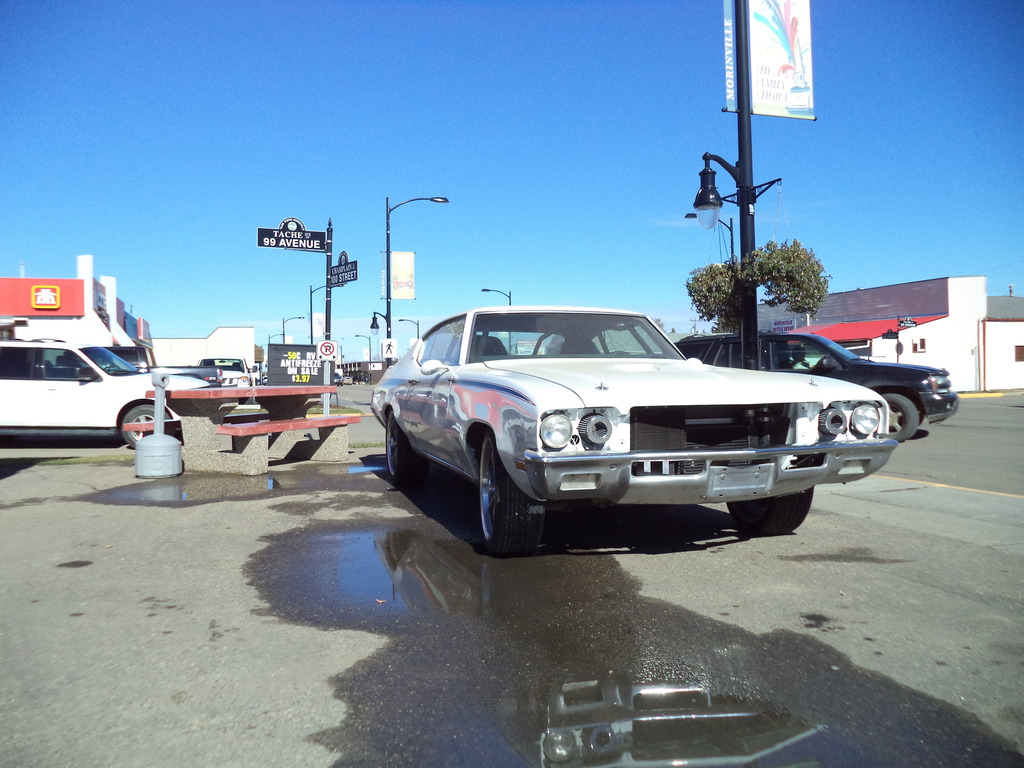
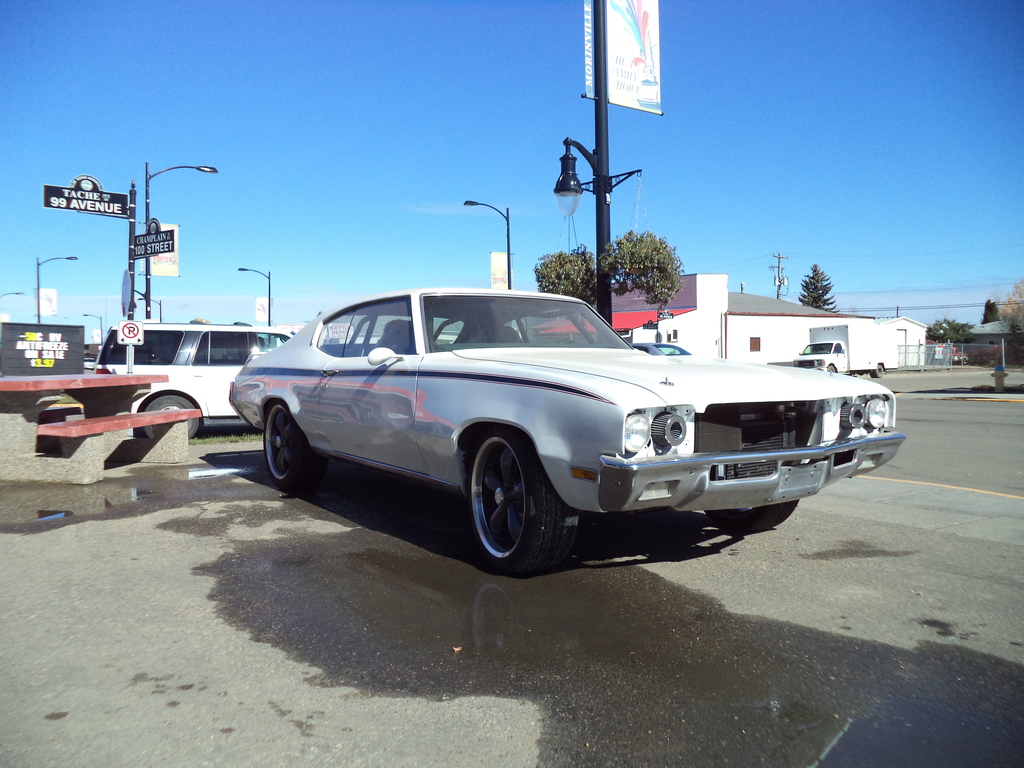
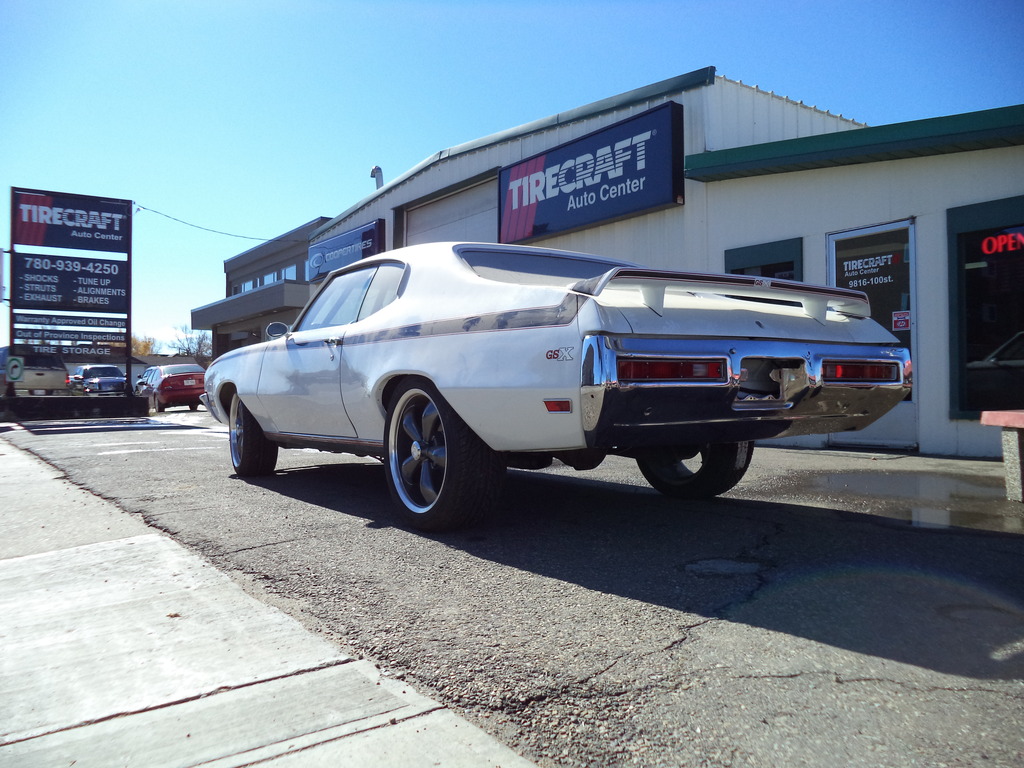
Lowering the boost to 7 or 8 PSI for a while till I can swap out the converter... The bottom end has passed my torture testing so it deserves a break, RPM limit is 6500 now.
On a good note I got my torque converter. Talked to the techs with TCI and they say it should stall at about 3800 RPM with my combo and can handle 1200+ HP without an issue. In fact they said they have guys running 2500 HP on these converters. My current converter was a 3800 stall rated for 700 HP but it could not handle my little 350 on high boost both dyno shops said it blew right through the converter:
TCI 251412
http://www.summitracing.com/int/part...1412/overview/
UN-loaded my 4L80E, may be a while before I install it but will be a good winter project for maybe next winter. I love these little carts, makes it easy to un-load trans, and the 80 is not light! Still have my paddle shifter setup on the shelf ready so I can manual shift electronically.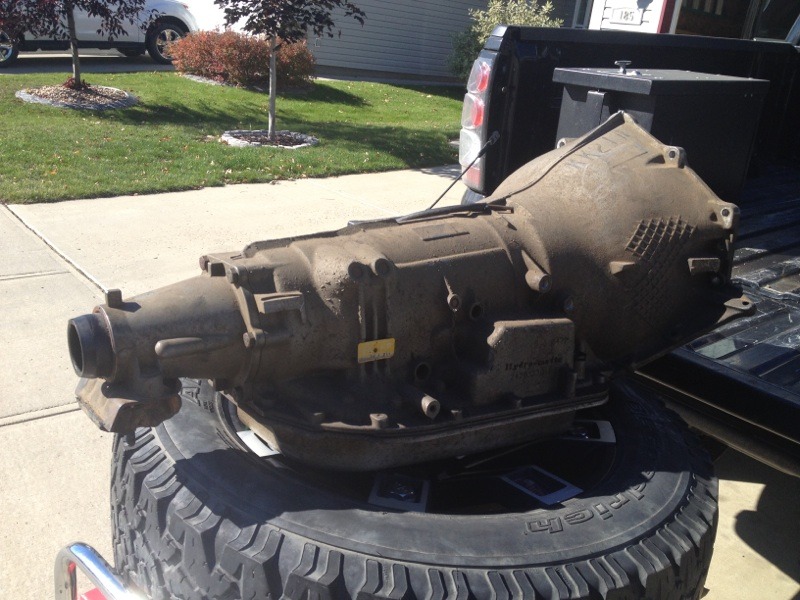
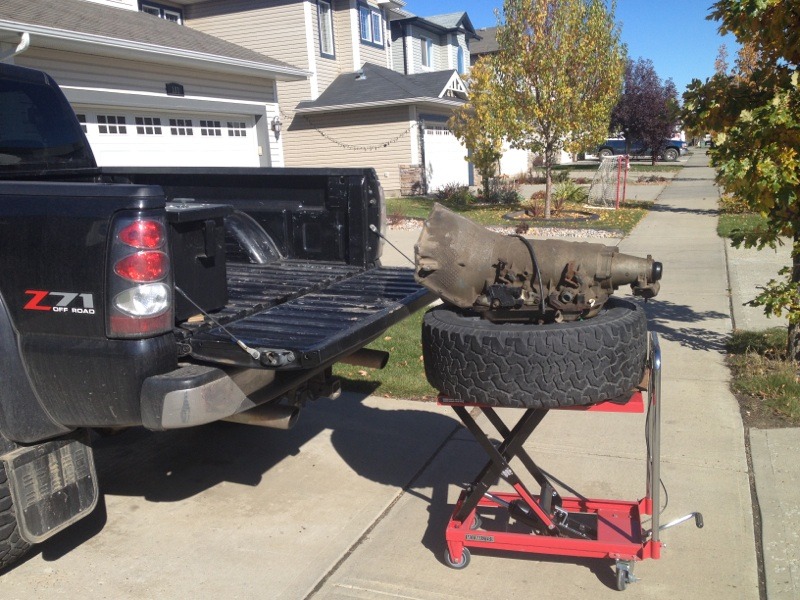
And a pic of the TINY 12" wide tires on the car, they spun on the dyno so looking at getting some bigger street tires for street and dyno testing so I do not have to use the ET streets on the dyno... Seen too many horror stories of blown up drag tires on the dyno: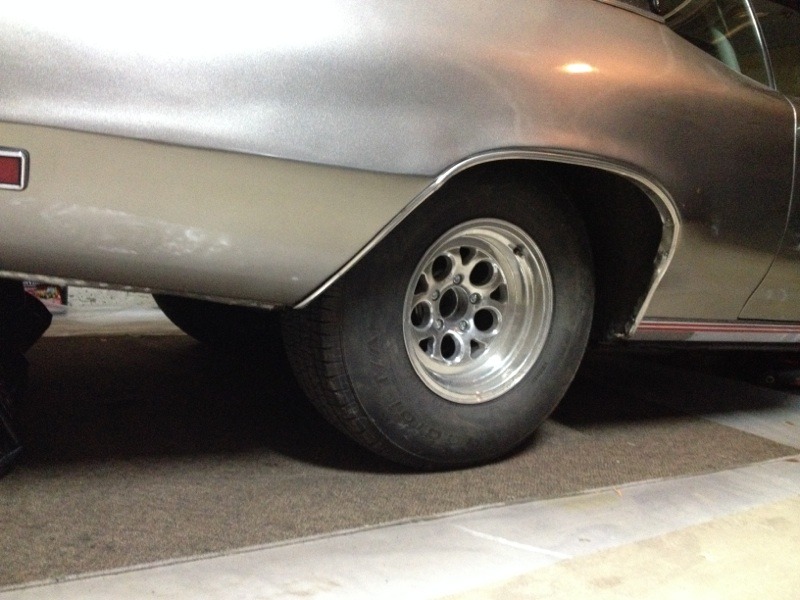
10/1/15
I keep on buying good running 350s for between $50 and $150 they are piling up! I need some more cars I think! these are so cool, well designed engines weighing 450 pounds fully dressed! Remove the stock intake manifold that weighs 53 pounds, bolt on my 14 pound custom intake, remove the exhaust manifolds, and bolt on some turbos and at about 440 pounds total you have a kick ass engine!
I ran a 125 shot on stock 350s on the highway for a long time.... 2.56 gear and nitrous made it a stang killer. Spun a rod be\earing at about 7500 RPM one time, got a replacement engine for $100 back in and going. But hey I am just a typer not a doer, but at 16 I had a lot of fun: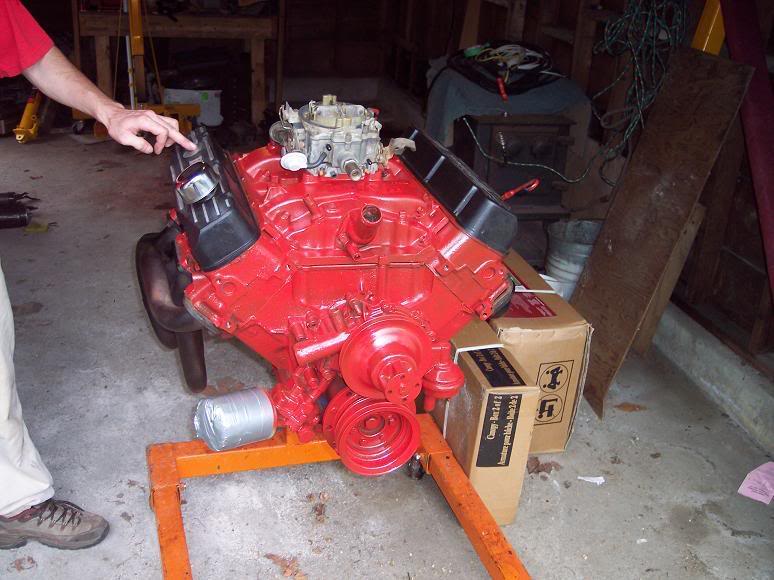

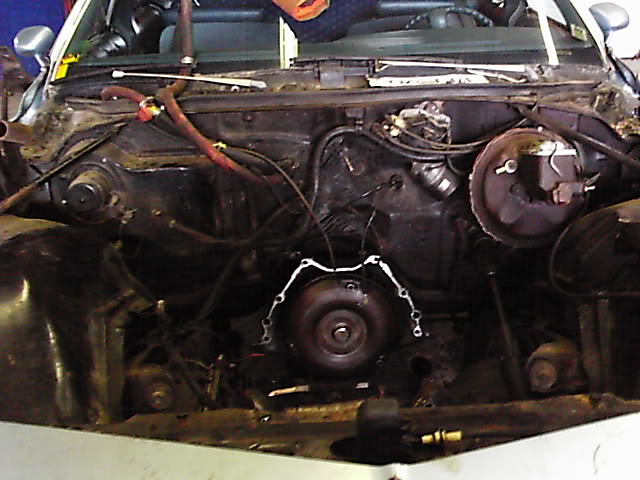
The data that we have so far about the stock rod strength is based on Dyno testing completed way back when when Darryl R was building circle track engines with custom singleplane intakes, high compression, and nitrous. They had experienced rod failures in the 6200 RPM range and I do not remember off the top of my head what HP was however when the nitrous hit like a sack of potatoes the rods let go... They even rebuilt the engine again using a new block and the same thing happened. I think they were forcing a 200 shot or something at an already 450+ HP NA engine. So that is where the limitations came from and if you search back in my previous posts over the years I have this data documented and on my other computer I have it as well.
Other than that not one has even broke a rod on the 350 that I know of... Even when Bill M did his testing he was at about 700 HP before he decided to have custom rods made and the stockers never did break for him (he used the 74-80 rods).
I will did up some quotes to help quantify my info:
Quote from Bill Mah regarding the stock rods:
"We had mine hummin' at the 700hp mark before we decided to have the billet rods made. That was also in excess of 7k rpm.
The late model rods seem to handle the pounding well."
Quote from Darryl Roederer, A.K.A. "Professor Buick"
"Jim- The rods WILL be the limiting factor, and will fail somewhere around 575-600 HP in the 6500 RPM range..... WATCH OUT!!!
I'm assuming your running "late" style cap screw rods in this engine? Side beams polished? Balancing pads "shaved" to reduce weight??? Mine were completely polished on all surfaces, sonic treated, and hard chromed... and 600 HP was "THE LIMIT"! Tho I was running heavier 10:1 "street" slugs and nitrous. With the "light weights" your using, you may have bought a little insurance."
Another from Darryl Roederer:
"Bud's engine made 580 HP at 6000 RPM [rev-limited] and was clearly capable of over 600 with more revs.
It used 10.5:1 forged slugs, MILDLY ported heads, small tube headers, that intake, Holly 900 cfm 3V carb, and a hot ignition.... And a HUGE cam.
Everything else inside the engine was pretty much built up from stock parts!
I do remember that engine had MEGGA torque in the 4000 rpm range, pulled like a hot big block, and it kept it's power right up to the 6000 limit.
With the tunnel ram, my engine[s] made 540 on motor alone at 6500 with a smaller cam and the same mild heads. We tried to feed 200 hp worth of nitrous into it, but experienced that gut-wrenching rod failure at about 6200 revs..... TWICE. That's right, I built two motors,,,, and blew both of them up on the dyno."
And the success of these engines off the nitrous was impressive they were winning races and having a good old time with these little 350s with little more than home porting and some hard work:
http://www.v8buick.com/showthread.ph...ghlight=darryl
I do not think that running 20 PSI on a stock bottom end is a good idea, but I wanted to try it anyway for gaining data. Sure it held but not going to be long term reliable I would not think.
The felpro gasket is living just fine on the passenger side so I do not think that head gaskets are the limiting factor right now. Either I made a mistake when I did the head gasket, or the head is warped, or I have some strange issue causing the one gasket to blow.
Yes there are a million things I would love to do for dyno testing, track testing, etc. however I can only do so much while working 80+ hours a week and having a young family.
I have been attacked on here, but those who know me know I am a hard working guy doing my best!
There are two separate things:
How much PEAK HP can a stock Buick 350 rod hold with a turbo application
How much LONG TERM HP can a stock 350 rod hold with a turbo application
So if I said that stock rods should be limited to about 600 HP I stand by that, I do not expect people to push the limits like I am and why should I. Lets give sound advise to help people build reliable engines.
Naturally aspirated, I would not be scared to make 500+ hp with a stock rod, but you always stand a chance of having a defective rod or bad lemon.
Here is some more info on the rod and piston topic:
The stock 68-73 rods are 630 grams each
The stock 74-80 rods are 675 grams each
The Herche rods are 545 grams each (stock dimensions)
Stock piston is about 704 grams
Diamond piston is 555 grams (stock compression height and 30 over)
Lets do the math:
630 x 8 (number of rods) + 704 x 8 (number of pistons) = 10,672 grams
545 x 8 + 555 x 8 = 8800 grams
That is a savings of 1872 grams of weight saved and a huge upgrade in strength. PLUS now I have a BOB weight of 1755 so now the crank gets to be lightened to match the parts. Both my good engine and my other OK engine both have Herche rods and Diamond pistons so now I can interchange parts if I ever need to. And when I had my custom Billet crank made they made it an exact copy of stock except with my custom bob weight and custom pin diameter to get my oil clearances perfected. No balancing needed, bolt in and go.
At 7000 RPM the mean (average) piston speed of a Buick 350 is 4491 feet per minute or 22 metres per second, how much will 1872 grams LESS reciprocating weight help my engine life?
And another note here is the weak part of a early 350 rod, although obviously many people have made power and never broke one so I use the term loosely:
17 psi is the highest i have dynod at...
The huge Holset HC5a will be engine dyno tested on the girdled alum head engine and 20 psi from it will be way more cfm than the same psi with my small turbos... That Turbo can produce 1800 hp. The engine dyno will remove a lot of variables... Then I will swap that engine into the car and retire it to an easy life at low boost.. Should still be able to run my goal of 10.00 on low boost with the alum heads.
Yes the book will be worth the wait... New Iron head flow head porting project as well as the alum head porting project etc will all be released in the book. The publishing company will print it as soon as I give the final draft. Then it will be fo sale on here, in chapters stores and on amazon books.com!
Got my car back from an alignment, and some new steering components... Hope to get it back out before the snow flies.
I looked into stroking the 350 and man is it TIGHT between the cam and the big end of the rods. I did not even bother pursuing plus it is cool to stay with the factory specs for rod length, piston height, stroke etc I think. 355 cubes in enough for me with some boost. The only way I see it working is using a smaller diameter rod pin on the crank to gain clearance with a smaller big end but then you give up some crank strength. I just do not think it is the answer for most people.
Derek has the tools, skills and he can make the nascar rods work with a stroker combo but most of us would be paying a lot of money for machine work etc and you never really know if the rods will clear the cam until you mock it up in the engine (after the machine work) and get a cam installed to see if the lobes hit the big end of the rods.
Boring the block out larger seems to have potential, especially for a NA build, but for boosted I will keep the bore as close to stock as possible and leave more material for both strength and options for more rebuilds later.
10/6/15
Good news! The head was in need of milling and the surface irregularities are most likely the cause of my head gasket issues. The head is back from the shop now all smooth and freshly milled. Waiting on some intake gaskets and then I can get some miles on this car before the snow flies.